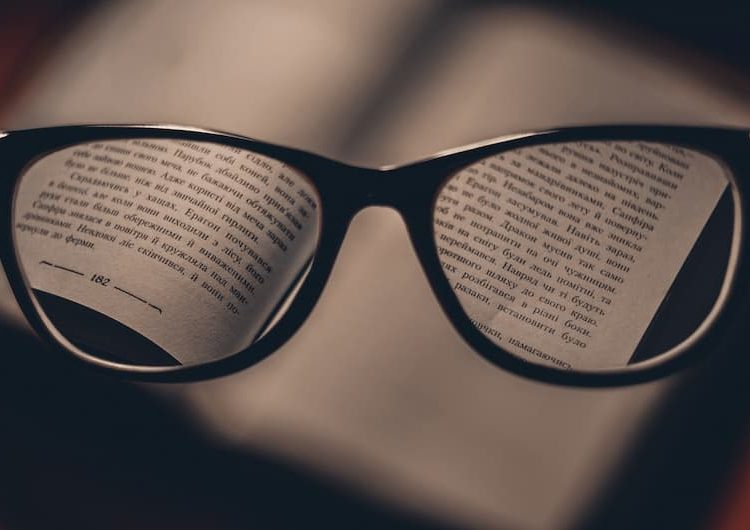To begin with, what does the term “nearsighted” mean?
When the visual image is focused in front of the retina instead of directly on it due to nearsightedness, the vision becomes blurry. When the eye’s optical length is longer than its physical length, it happens.
Due to their rapid growth, school-age children and teenagers are particularly susceptible to developing nearsightedness, which worsens throughout the growth years and necessitates frequent adjustments to their glasses or contact lenses. A nearsighted person sees close objects clearly while blurring out objects in the distance.
For more information, keep reading.
Table of Contents
What Does Nearsightedness Mean?
Nearsightedness, also referred to as myopia, is the inability to focus on distant objects clearly while being able to see close-up objects clearly. When the eyeball is too long, light rays focus before they reach the retina, resulting in nearsightedness.
Depending on their lifestyle, the driving laws in their state, and their line of work, people with nearsightedness might need glasses, contacts, or corrective surgery. Depending on how severe their condition is, their frequency of wearing glasses may change. For instance, some people might require glasses for driving but not for watching TV, going to the movies, or other activities. Others may have trouble seeing objects that are 10 feet away. See more about How Far Can The Human Eye See?
How Dangerous Are Nearsightedness’ Long-term Risks?
Nearsightedness and a detached retina. A detached retina is more likely to occur in nearsighted individuals. The tissue lining the back of your eye lifts or separates from the eye wall when this happens. It is a severe eye condition that can result in blindness. People who have severe nearsightedness should schedule routine retinal exams with an ophthalmologist. Your risk is higher if you have severe nearsightedness. Ask your ophthalmologist to go over the retinal detachment warning signs with you.
A higher risk of glaucoma, cataracts, and other eye conditions is present in people with severe nearsightedness.
Complications Of Nearsightedness
The following complications, which range in severity from mild to severe, are linked to nearsightedness:
- Reduced quality of life. Life quality can be impacted by untreated nearsightedness. You might not be able to do something as well as you would like. Additionally, having poor vision may make it harder for you to enjoy your daily activities.
- Eyestrain. Your eyes may have to work harder to focus if your nearsightedness is not treated. Headaches and fatigue may result from this.
- Impaired safety. If you don’t get your vision fixed, you could endanger both your own safety and other people’s. If you are operating heavy machinery or driving a car, this could be particularly dangerous.
- Financial burden. Particularly with a chronic condition like nearsightedness, the price of corrective lenses, eye exams, and medical treatments can add up. In some cases, vision loss or reduction can also have an impact on one’s ability to earn money.
- Other eye problems. You run a higher risk of developing glaucoma, cataracts, myopic maculopathy, a condition that damages the central retina, if you have severe nearsightedness. Long eyeballs have tissues that are stretched and thinned, leading to tears, inflammation, flimsy new blood vessels that bleed easily, and scarring.

What Does Farsightedness Mean?
The opposite is true for those who are farsighted (also known as hyperopic); close objects are blurry while distant ones are distinct. When the eyeball is too short, light rays focus beyond the retina and cause farsightedness.
Glasses, contacts, or corrective surgery are additional options for treating farsightedness. Others may only require them when reading, using a computer, or performing close-up tasks like sewing, while some people may need to wear their glasses and contacts constantly.
What Is Myopia?
Nearsightedness, or myopia, is the condition in which a person struggles to see objects in the distance but can see close objects clearly. For instance, a nearsighted person might not be able to read highway signs until they are only a few feet away.
A sizable portion of people have myopia. It is an eye focus disorder that is easily treated with eyeglasses, contact lenses, or surgery.
How Common Is Myopia?
Myopia is a very widespread condition. Over 40% of Americans are myopic, according to the American Optometric Association, and this percentage is rising quickly, particularly among school-age children. In the upcoming decades, eye experts anticipate that this trend will continue.
Today, one in four parents has a child who is nearsighted to some extent. Myopia risk may be increased, according to some eye specialists, if your child spends a lot of time doing “near” activities like reading or using a computer or smartphone.
Is Blindness Possible With Myopia?
Myopia is typically a minor annoyance that can be treated with eyeglasses, contact lenses, or surgery. Degenerative myopia, a progressive type that can be extremely serious and is the main cause of legal blindness, does, however, occasionally develop. 2% of people in the population have degenerative myopia. Jews, Chinese, Japanese, and people from the Middle East are more likely to have it than other populations. It is thought to be inherited. See more about Do Edibles Make Your Eyes Red?
Myopia And Hyperopia Treatment
While surgery reshapes the cornea to direct light onto the retina, glasses and contacts alter how light rays are bent as they enter the eyes. Having the proper prescription is essential when purchasing eyewear. Headaches, vertigo, and perhaps even nausea can occur when wearing glasses with the incorrect prescription.
Both nearsightedness and farsightedness are possible in varying degrees. The same remedial actions, fortunately, are accessible. Annual comprehensive eye exams are crucial for maintaining a valid prescription, screening for eye conditions, and determining the best preventive and treatment options.
The End
A nearsighted eye typically develops when it becomes too long from the front to the back. When the cornea’s shape is too steep, nearsightedness can also happen. Rarely, it may be caused by how the cornea and lens are positioned in relation to one another.
Best wishes.





